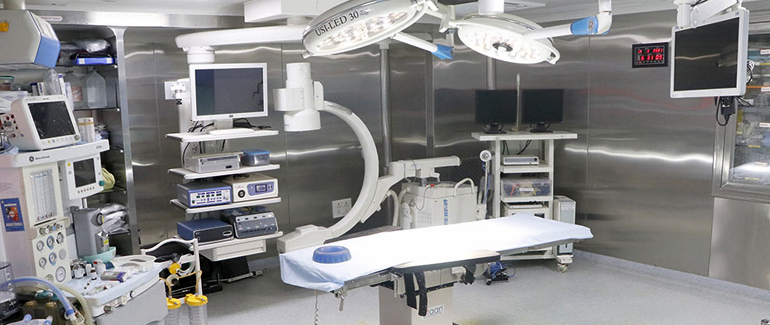
Laminar Well Equipped OT
In medical and surgical settings, operating theaters play a crucial role in providing a sterile and well-equipped environment for various surgical procedures. Here are some features and considerations commonly associated with a well-equipped operating theatre:
- Laminar Airflow:
- Laminar airflow systems help maintain a clean and sterile environment by controlling the direction and speed of air circulation, reducing the risk of airborne contamination.
- Sterilization and Infection Control:
- The operating theatre should be equipped with effective sterilization methods for surgical instruments and surfaces to prevent infections.
- Strict infection control protocols are implemented to minimize the risk of surgical site infections.
- Surgical Lights:
- Adequate and adjustable lighting is essential for surgeons to perform procedures with precision.
- Modern operating theaters often use LED surgical lights, which provide bright, shadow-free illumination.
- Ventilation Systems:
- Effective ventilation systems are in place to ensure proper air exchange and control the temperature within the operating theatre.
- Surgical Table:
- A versatile and adjustable surgical table accommodates different surgical procedures and allows for patient positioning.
- Some tables may have features like electric adjustments and radiolucent surfaces.
- Medical Gas Supply:
- Oxygen, nitrous oxide, and other medical gases are readily available for anesthesia and respiratory support during surgeries.
- Anesthesia Machines:
- Well-equipped operating theaters have anesthesia machines with the necessary monitoring and control features to administer anesthesia safely.
- Monitoring Equipment:
- Monitoring devices, including ECG machines, blood pressure monitors, pulse oximeters, and temperature monitors, are essential for patient safety during surgery.
- Surgical Instruments:
- A comprehensive set of surgical instruments and tools are available, specific to the type of surgery being performed.
- Communication Systems:
- Effective communication systems, including intercoms and audio-visual systems, facilitate communication among surgical team members.
- Emergency Equipment:
- Emergency carts with essential medications, defibrillators, and other life-saving equipment are readily accessible in case of unforeseen complications.
- Documentation Systems:
- Electronic medical record (EMR) systems or other documentation methods are often integrated for accurate and efficient record-keeping.
- Post-Anesthesia Care Unit (PACU):
- A dedicated area for post-operative recovery and monitoring is connected to the operating theatre.
A well-equipped operating theatre is essential to ensure patient safety, support surgical teams in performing procedures efficiently, and maintain a sterile environment to reduce the risk of complications. Different types of surgeries may require specific additional equipment or facilities based on their complexity and nature.



